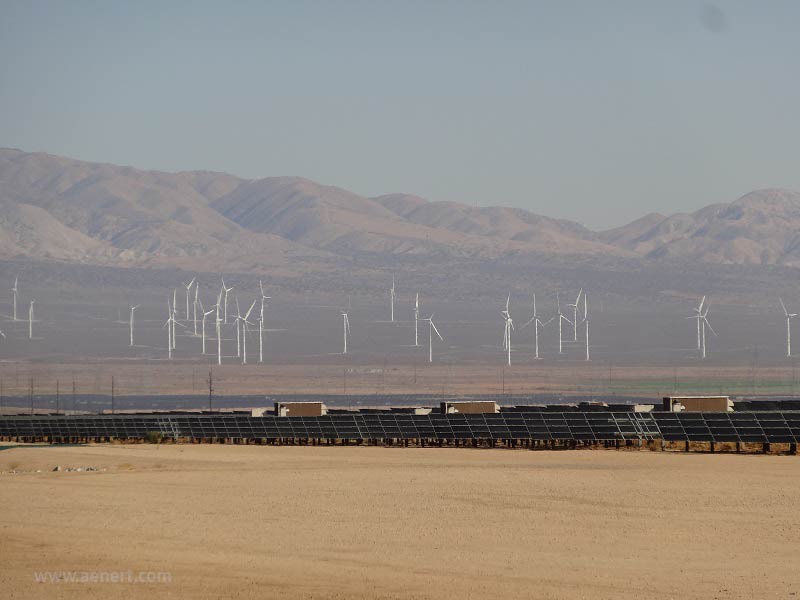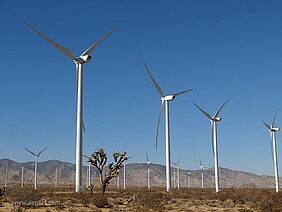The U.S. Energy Information Administration (EIA) recently published data on electricity generation in the U.S. for the first half of 2022. In our opinion, of particular interest is the data on wind generation, as the main area of renewable energy in the U.S. This is also relevant because of the growing global crisis in the fossil fuel energy sector. First of all, it should be noted that the share of renewables in U.S. power generation this year may significantly exceed all previous indicators. There is reason to believe that this share could be 23-24%, an increase of two to three percent over the previous two years. Further, and most significantly, wind power in the U.S. in the first half of 2022 has arguably shown its best performance ever. Here are just a few comparative figures. Wind power's share in total renewable electricity generation (utility scale facilities) was 40.6% in 2019, 43% in 2020 and 46% in 2021. For the January-July 2022, it rose to 47%, compared to 44.6% for the same period last year. From March to May 2022, monthly wind turbine power generation exceeded 40 TWh, which was not seen in either 2020 or 2021. While 197.76 TWh was produced in January-July 2020 and 215.15 TWh in 2021, over 270 TWh was produced in the same period in 2022. In July 2022, wind power generated almost 30 TWh of electricity, 36% more than in July 2021 and 28% more than the same month in 2020.
Nevada, US
It is difficult to say definitively what has caused such stunning results. Of course, favourable windy weather conditions may have contributed greatly to this. But one would like to believe that a serious input has also come from improving the technical characteristics of wind turbines and their maintenance and repair, on which their efficiency is no less dependent. Currently, the main suppliers of wind turbines in the United States are the world leaders in this market segment – GE Renewable Energy and Vestas, each with more than 40 GW of installed capacity, i.e. in total more than half of the total wind turbine fleet in the country. Siemens Gamesa should also be named alongside these companies. All of them stand out for their repeated peak performance in various technical aspects of wind turbine operation, including reliability, efficiency, low failure rates, extended maintenance intervals, etc. These companies continue their intensive expansion in the US market. For example, according to press releases, this year Vestas received US orders for 185 MW in September, 86 and 266 MW in June, 201 MW in March, and 221 MW in December last year.
The very impressive capacity factor values for 2022 are also listed in the EIA statistics. Whereas in 2012 the capacity factor for energy was 31.8%, in 2020 it was already 35.3%. However, in April 2022, this figure reached a staggering 46.8%. As rightly noted in Today in Energy (September 9, 2022), the first half of the year is a more favourable period for renewable energy, including wind power, than the second half of the year, when power generation declines by about 20%. Nevertheless, never in the history of the capacity factor statistics, including the first half of the year, has it exceeded 40% for four consecutive months, which happened in February-May 2022.

Palm Desert, California, US
The encouraging wind energy results for the first half of 2022 are reasonably optimistic but can be misleading if you look at the overall development of renewable energy in the US. Over the past ten years since 2012, total electricity generation, excluding Small Scale Facilities, has remained virtually unchanged (4,047.7 TWh in 2012 and 4,115.5 in 2021 TWh). At the same time, the share of renewable energy over these years increased from 14% to 21% (for wind power, respectively, from 3.5% to 9.2%). Thus, this was due to the replacement of other power generation sectors, primarily the coal sector, whose share over the decade fell from 37% in 2012 to 22% in 2021. It is unlikely that with the increase in electricity consumption during this period, this could have happened only from renewable energy sources, but rather from fossil fuels.
